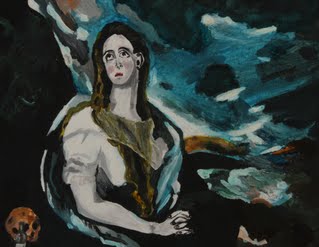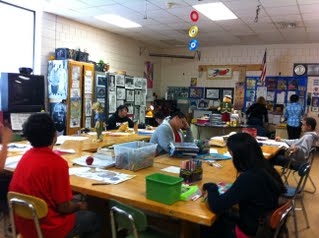
Holy Cross and South High students and teachers at the Cantor Gallery
College of the Holy Cross project leader:Dr. Amanda Luyster |
Worcester South High project leaderChristine Lucey-Meagher |
Holy Cross students 2012Michaella CaporelloDioni Cruz Andrea Davis Connor Davock Molly Feit Abigail Hynes-Houston Sally Jacob Clare McLaughlin Kimberly Mejia Nicholas Parsons John Peterson Kate Shea Paige Sullivan Hope Tobin John Vatalaro Kathryn Veale Chelsea Weir |
Worcester South High studentsDillon AgyiKarla Collazo Amersaline Dermatis Brandon Figueroa Velazquez Daniel Ford Gankaris Francisco Courtney Gazaille Emmanuel Irizarry Deidre Kilgore Jackie LaPierre Sabrina Maliqi Michelle Navarro Marvin Nkrumah Andreana Nop Adam Pardo Sarah Passamonti Carlos Rivera Audy Sanchez Kevin Saravia Sang Tran Lauren Wasilko |
Holy Cross students 2013Christiana Ansaldi |
Claremont Academy project leaderEmily Mele Claremont Academy studentsIsaac BoatengJonzel Diaz Alexa Fencher Saja Nasser Nuha Nasser Angel Perez Ofelia Villatoro |
We would also like to thank the following, without whom this project would not have been possible:
The Worcester Art Museum 
Debby Aframe
Sarah Gillis
Kari Kipper
Katrina Stacey
Worcester South High
School Principal Maureen Binienda
The College of the Holy Cross
Edward Augustus, Jr.
Lauren Buckley
Janis DesMarais
David Gyscek
Roger Hankins
Richard Lent
Jerry Maday
Ariana Mahoney
Richard Matlak
Kristine Maloney
Margaret Nelson
Michelle Sterk-Barrett
Amy Wolfson
The Cantor Gallery
The Center for Teaching
The Donelan Office of Community-Based Learning
The Marshall Fund
Claremont Academy
School Principal Ricci Hall
Worcester Public Schools
Timmary Leary, Visual Arts Liaison
The long story
In the spring of 2012 I had been teaching "Introduction to Visual Arts" at the College of the Holy Cross for seven years, and I had a professional mid-life crisis. I was doing a good job, and my students learned a lot about how art can teach us about history, but I didn't feel like they were learning about how art can teach us about the world today. I wanted to make my art history classes feel more grounded in the "real world." How is art relevant today? Why do we study these strange objects? What does art have to do with our everyday lives? I had heard about community-based projects from former colleagues at Harvard and current colleagues at the College of the Holy Cross. I liked the idea that college students could learn from the people and cultural resources around them, and I thought that community-based learning would be a good way to approach and examine the relevancy of art in the world today.
 With the help of Christine Lucey-Meagher, an art teacher at Worcester South High school, as well as assistance from the Worcester Art Museum, and the Center for Teaching and Donelan Office of Community-Based Learning at Holy Cross, I came up with a plan. My college students would produce a virtual (online) tour of selected objects in the Worcester Art Museum. To create that tour, my college students would work with high school students in small groups at the Worcester Art Museum. The college students would interview the high school students – technologically adept and not necessarily museum-loving! – to see what they were interested to know about each art object, and how they could relate that art object to their own lives. The high school students would later make their own art based on the objects they had seen in the Worcester Art Museum, and the college students would use the results of their interviews and the subsequent research they had undertaken as the basis for an online "virtual tour," including original text alongside images from the WAM, photographs of the high-school art, and audio and video clips.
With the help of Christine Lucey-Meagher, an art teacher at Worcester South High school, as well as assistance from the Worcester Art Museum, and the Center for Teaching and Donelan Office of Community-Based Learning at Holy Cross, I came up with a plan. My college students would produce a virtual (online) tour of selected objects in the Worcester Art Museum. To create that tour, my college students would work with high school students in small groups at the Worcester Art Museum. The college students would interview the high school students – technologically adept and not necessarily museum-loving! – to see what they were interested to know about each art object, and how they could relate that art object to their own lives. The high school students would later make their own art based on the objects they had seen in the Worcester Art Museum, and the college students would use the results of their interviews and the subsequent research they had undertaken as the basis for an online "virtual tour," including original text alongside images from the WAM, photographs of the high-school art, and audio and video clips.
The virtual tour is entitled "ARTful Bodies." These art objects, although produced millennia and continents apart, all represent the human body. We include images of children and teenagers, parents and the aged, images of beautiful bodies, haggard bodies, warrior bodies and divine bodies. We can all relate to images of the human body which we inhabit. One oil painting provoked two high school students to engage in a long conversation about the complicated relation of sisterhood. What does it feel like to live day in and day out with a sister? At times intimate, and at times distant; at times warm, and at times – less warm! An ancient stone relief provoked discussion of linebackers, not only physically imposing but (ideally) immovable, like a stone wall, indeed. A sculpture of the ancient goddess Hygeia encouraged the students to think about what health means for women today. Does it mean skinny like a fashion model? What does a healthy woman look like? What does she do?
Benefits for Holy Cross students
The benefit for my students is that the project has forced them to think, hard, about the role of art in the world today. They are forced to consider the relevancy of art when faced by a potentially challenging audience. They are also required to take responsibility for their own work which will be presented, largely as is, to a worldwide public audience. Finally, they come to realize in a practical way that the world around them, from students in public high schools to dusty old objects in museums, has incredibly rich potential. And finally, that that rich potential is available to them directly, without need for me as an intermediary. I see this as part of my job – not just to teach facts, but to teach how to learn.
Benefits for Worcester High School students
For the high school students, I hope this engagement has three outcomes. It has connected them with college students and a college campus, and, therefore, increased their familiarity with college life. Second, the project has connected students with the world of artwork in museums, and, hopefully, increased their enthusiasm for both art and museums in the process. I imagine students and friends and families might be excited to go to the WAM to access "their" online tour. Finally, validating a student's opinion in a public forum, like an online tour, underlines our belief that what that student says matters, and, by extension, that that student matters. For both high school and college students, self-esteem is central to academic (and life) achievement.
 |
 |
| Mary Magdelene by South High student Sabrina Maliqi | South High students working in art room |
My hopes for this project
My hopes for this project are myriad. I hope this project encourages my students to have more confidence in their own abilities to work in the "real world" and in the Worcester community. I hope that the high school students feel confident in entering the worlds of museums and colleges, and that they too consider what their contributions there can be. I hope that this project strengthens bonds between different groups of people, from different backgrounds, with different assumptions. I hope that this project encourages more people to love art as much as I do – because art is both beautiful and awful, silly and serious. It makes us remember crushes and tragedies, sweet infants and spiritual saints, and most of all it makes us think, and talk, and learn from each other.
I hope that all kinds of people, from within and outside Worcester, will use our "virtual tour" as an invitation to visit the Worcester Art Museum and there to confront, face to face, body to body, some of the masterpieces on show every day. The tour has been designed for multiple different types of use: some may wish to explore the tour from home and then later come to the museum; others will bring their smartphones and tablets to the museum and listen to the audio clips while standing in front of the actual work being discussed. Many people enjoy seeing art through different types of lenses; that is, not only looking at it in silence, but listening to what other say about it, and reading about what others have seen in it. I do not believe that technology changes art, only that it can help us to see art in different ways. I find it exciting to hear young people coming to grips with different works of art and gradually determining how each work of art is relevant to his or her life today. In the end, of course, how art relates to your world today is – up to you.
Amanda Luyster, Nov 6, 2012